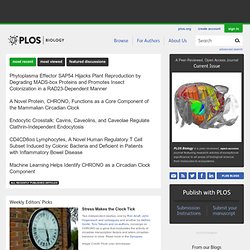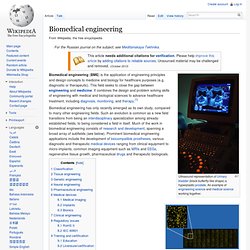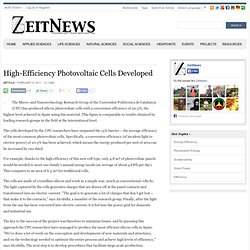

Des bactéries qui ne perdent pas le Nord » Article » OwniSciences, Société, découvertes et culture scientifique. Virtual Museum of Bacteria. PLoS Biology : Publishing science, accelerating research. A Peer-Reviewed, Open Access Journal Current Issue PLOS Biology is a peer-reviewed, open-access journal featuring research articles of exceptional significance in all areas of biological science, from molecules to ecosystems.

Biomedical engineering. Example of an approximately 40,000 probe spotted oligo microarray with enlarged inset to show detail.

Biomedical engineering (BME) is the application of engineering principles and design concepts to medicine and biology for healthcare purposes (e.g. diagnostic or therapeutic). This field seeks to close the gap between engineering and medicine: It combines the design and problem solving skills of engineering with medical and biological sciences to advance healthcare treatment, including diagnosis, monitoring, and therapy.[1] Biomedical engineering has only recently emerged as its own study, compared to many other engineering fields. Such an evolution is common as a new field transitions from being an interdisciplinary specialization among already-established fields, to being considered a field in itself. Much of the work in biomedical engineering consists of research and development, spanning a broad array of subfields (see below).
Classification[edit] Tissue engineering[edit] Bionics[edit] High-Efficiency Photovoltaic Cells Developed. The Micro- and Nanotechnology Research Group of the Universitat Politècnica de Catalunya (UPC) has produced silicon photovoltaic cells with a conversion efficiency of 20.5%, the highest level achieved in Spain using this material.

This figure is comparable to results obtained by leading research groups in the field at the international level. The cells developed by the UPC researchers have surpassed the 15% barrier -- the average efficiency of the most common photovoltaic cells. Specifically, a conversion efficiency (of incident light to electric power) of 20.5% has been achieved, which means the energy produced per unit of area can be increased by one third.
For example, thanks to the high efficiency of this new cell type, only 4.8 m² of photovoltaic panels would be needed to meet one family's annual energy needs (an average of about 4 kWh per day). This compares to an area of 6.5 m² for traditional cells. ScienceDaily. Defining life: the development of an artificial cell. Last year’s artificial cell was created by J.

Craig Venter and colleagues using a "top-down" approach: they replaced the genome of a bacterium, Mycoplasma genitallium, with a synthetic DNA sequence they designed to contain the minimum set of genes required for life. It was an amazing feat, but all of the machinery necessary to make the cell work was already present within the bacterial shell. They simply hijacked it with their synthetic genome. This year, an artificial cell project launched, and it intends to use a "bottom up" approach; Libchaber et al. plan to synthesize a viable cell from its basic components. They define these as the cell membrane, the border delineating the cell; the apparatus needed to coordinate metabolic activity; and finally the DNA, which acts as a both an information program driving metabolism and a code for remembering said program, much like a Turing tape.
The membrane part is going to be easy. A few caveats at this point. Then there's the issue of genes. Health News - Medicine News, Health, Health Technology, Medicine Technology. Nanotechnology News - Nanoscience, Nanotechnolgy, Nanotech News. Cell Biology and Microbiology News - Biology news, Microbiology.